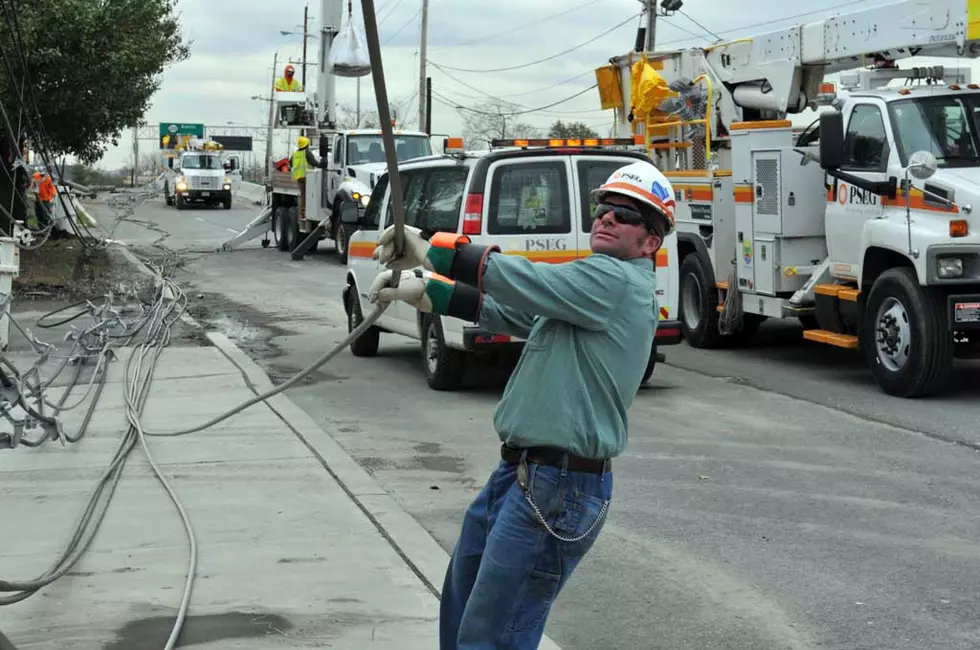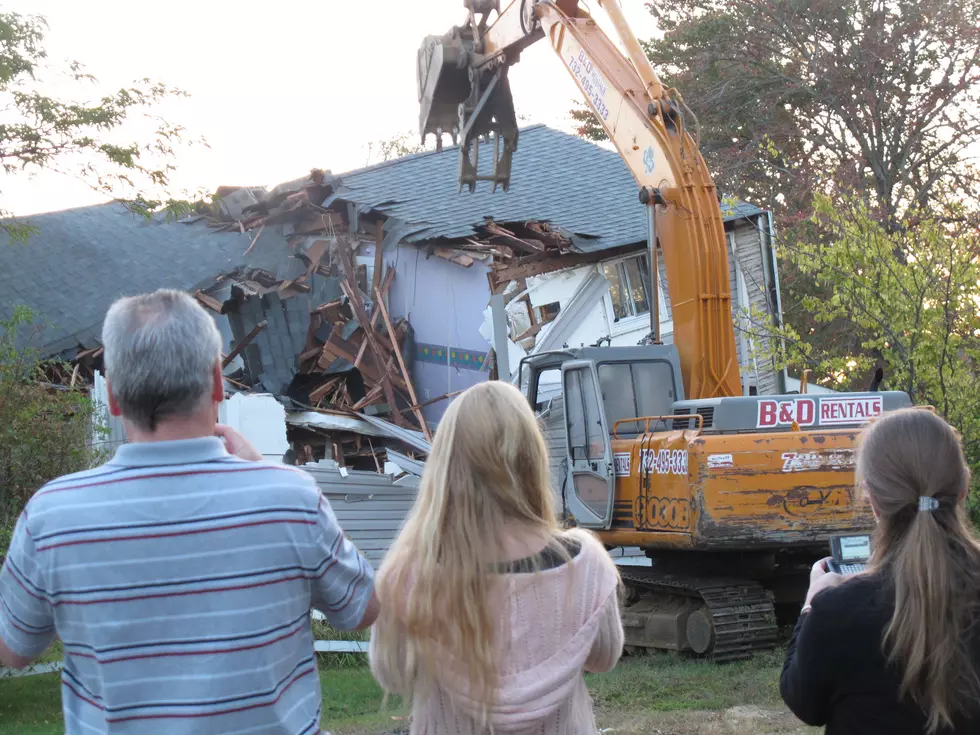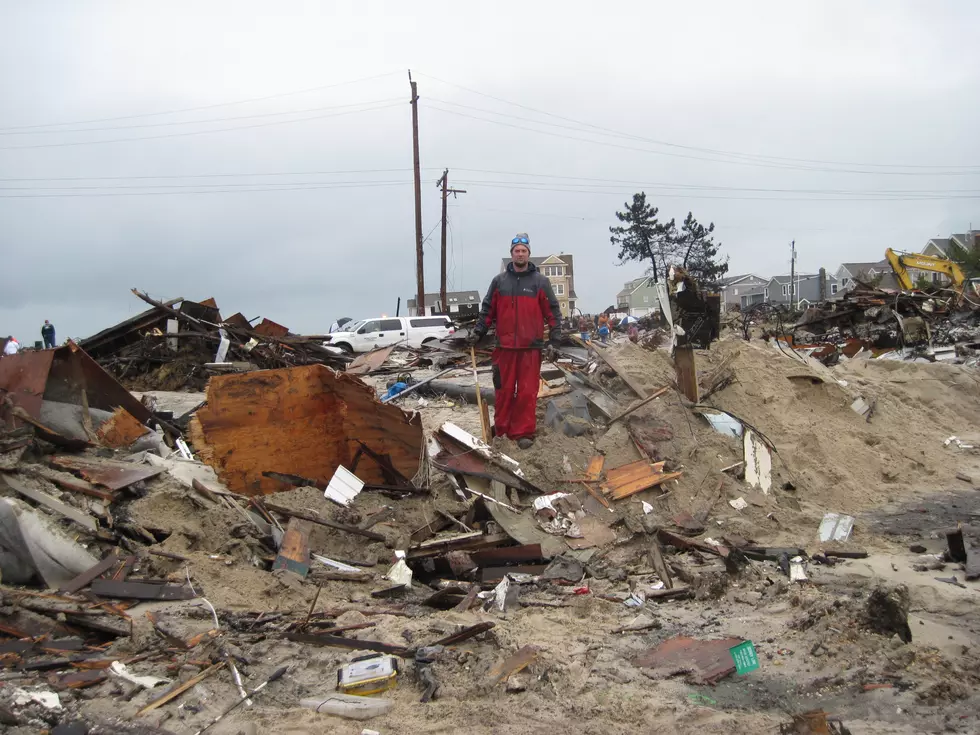
Sandy cut power to millions — how NJ utilities are preparing for another storm
You didn't have to live along a coastline to feel the wrath of Superstorm Sandy.
The most shared negative experience from the October 2012 storm was the loss of power, which lasted several days for many Garden Staters.
"I was able to boil water, so I ate macaroni and cheese for a week, or hot dogs," Englishtown resident John Bind told New Jersey 101.5. "I was getting around using candles and flashlights, because flashlights on phones weren't as big at the time."
This is part four of a five-day series honoring the 10-year anniversary of Sandy — its wrath, the rebuild since, and New Jersey's preparedness for future storms.
Part 1: What made Sandy so unique?
Part 2: NJ residents still fighting to get home
Part 3: Businesses forever changed by the storm
Millions of utility customers were sent into the dark that Monday night or shortly after. Due to the reach of the outages, New Jerseyans were scrambling to find operating gas stations that could either fill their vehicles or their gasoline containers to run generators.
"I gave up on the generator after a day or so," Bind said. "I thought I'd be out of power for a day or two."
Nearly every one of Jersey Central Power & Light's customers lost power due to Sandy. Taking into account a nor'easter that hit the state on Nov. 7, JCP&L recorded 1.2 million storm-related outages, and the utility handles 1.1 million customers.
"This is due to some customers experiencing multiple service interruptions," spokesman Chris Hoenig said.
More than 13,000 staff members were involved in electricity restoration post-Sandy, Hoenig said. That count included over 8,000 line workers; most came from out of state.
Repairs to the high-voltage lines that feed JCP&L's system took several days. Then, from Nov. 2 through Nov. 7, crews turned the lights on for about 100,000 customers each day. The Nov. 7 storm, which featured snow and slush, knocked power out for 130,000 customers.
By the weekend of Nov. 10, all customers "who could safely receive service" were back in business. Hundreds of customers, particularly along the coast, sustained too much damage to be reconnected immediately, JCP&L said.
More than 2 million New Jersey customers of Public Service Electric and Gas lost service because of Sandy. That's about 90% of the customer base.
"We had never had numbers like that before," said Kim Hanemann, president and CEO of PSE&G. "You not only had those normal wind, rain impacts — you had that tidal surge that impacted our system like nothing we've seen before."
Switching stations and substations were underwater, said Hanemann, who was responsible for the organization of mutual aid crews in the aftermath of Sandy.
Utility changes since Sandy
Portions of a $4.8 billion investment from PSE&G are still in progress, to strengthen infrastructure and modernize response approaches.
Upgrades have been made at dozens of substations. The remnants of Ida that pummeled New Jersey in September 2021, Hanemann said, tested those upgrades.
"They were high and dry. There was no impact," Hanemann said.
In the years since Sandy, PSE&G has put a sharper focus on smart grid technology, and has implemented methods to limit the number of customers impacted by potential outages.
"We're looking to install assets that are more resilient," Hanemann added. "We have a lot of aging infrastructure to replace."
Substation upgrades were a major part of the post-Sandy fix for JCP&L as well. The utility upgraded 20 substations by installing flood barriers, raising equipment, and installing real-time monitoring devices.
Not a single customer lost power due to flooding during Ida or Tropical Storm Henri, the utility said.
Beyond millions of dollars spent annually on its transmission system — a $200 million project launching soon aims to reinforce JCP&L's transmission system in northern Monmouth County — the utility has upped spending to take on a leading cause of power outages: trees.
"Since Sandy, JCP&L spends an average of about $10 million more each year on tree trimming and vegetation management," Hoenig said.
An additional $43 million is focused on trimming and removing trees off the utility's rights of way.
Comprehensive updates have been made to how the utility communicates during the storm, both with customers and government officials.
"Our customers and local officials needed more information during the restoration process," Hoenig said of the Sandy response. "They needed more accurate estimates of when power would be restored, and the work that was going on in their area."
10 years later — Sandy makes landfall in New Jersey
Dino Flammia is a reporter for New Jersey 101.5. You can reach him at dino.flammia@townsquaremedia.com
Click here to contact an editor about feedback or a correction for this story.
Say you’re from Jersey without saying you’re from Jersey
What would happen to NJ if we were attacked by nuclear weapons?
More From 92.7 WOBM









